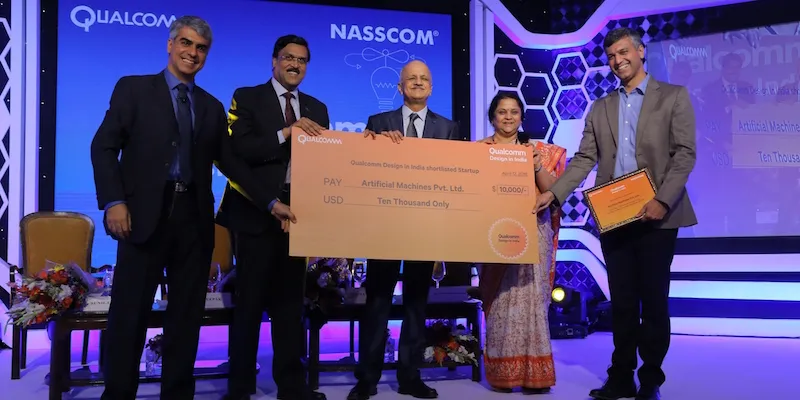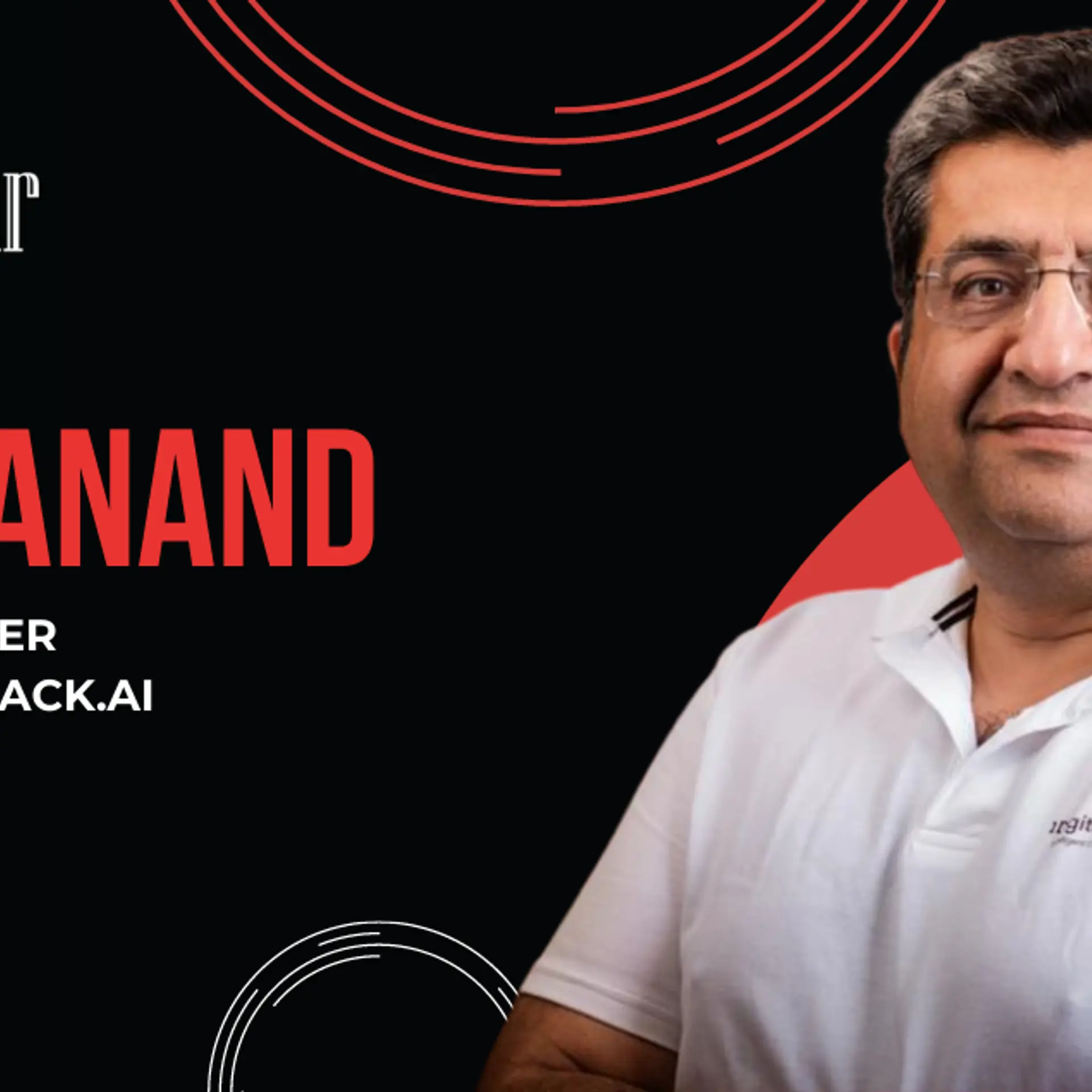#QDIC throws up 10 big ideas that could revolutionise the industry - 1
This article is sponsored by Qualcomm.
Just look around. A lot of things we use today seem impossible to live without – from portable laptops to electric bulbs to power banks – were once mere ideas that seemed too far-fetched to ever become real. Today, they are so ingrained in our existence; they have changed the way we live. Almost every technology, every object that is a part of our life today, at some point, was thought revolutionary.

It was to reiterate the power of designing solutions that could make a significant impact on our future that Qualcomm announced the Qualcomm® Design in India Challenge in collaboration with NASSCOM. This initiative, also aligned with the vision of Make in India, was aimed at bringing about a paradigm shift from a services-driven model to a manufacturing model for indigenous products that will cater to the needs of India and the rest of the world. The goal of the Challenge was to catalyse the creation of a product and hardware design ecosystem in India in the domain of smartphones, tablets and Internet of Things (IoT) products for Healthcare, Education, Banking, Automotive, Wearables, and Smart Cities.
The top 10 companies shortlisted as part of the Qualcomm® Design in India Challenge 2015-16 show immense potential to influence the way things are done. Here’s a quick introduction to five of the top 10. (Also read about the other five ideas and startups set to bring big positive changes to the industry.)
An intelligent quad-rotor drone from Aarav Unmanned Systems
This idea from Aarav Unmanned Systems stems is unique because the intelligent quad-rotor drone is capable of executing autonomous flights in GPS-denied environments using vision-based navigation techniques. Co-founder Vipul Singh says, “We worked on the concept of using vision-based navigation techniques, because we felt that there was a need to increase the usability of drones in hostile environments like that of a nuclear power plant or a disaster area. In such situations, GPS navigation facility is often unavailable.”
The team is also looking at helping people who work on futuristic algorithms reduce redundancies and make the drone even more intelligent. “Today, there are a lot of restrictions on drones because they are not intelligent and need a lot of human intervention. And, that’s why a lot of work is being done around the world to address these concerns. But one key problem here is that building a drone requires people with diverse capabilities. So apart from the quad-rotor, we have also built a platform for building futuristic drones, which we have christened Nayan,” says Vipul. He further explains that while there are similar platforms to Nayan, they are often expensive and unaffordable for students or developers who want to contribute to the field. So Nayan is not only affordable, but the platform has been built in such a way that it becomes easier to implement the idea even without having a deep understanding of flight controllers or drone-related subsystems. According to Vipul, “All you have to do is plug in your code onto Nayan.”
Ark Robot’s autonomous robot for known environments
The enterprising 20-member team at Ark Robot believes that the future of retail intelligent warehousing lies with what they call ‘Ark Robot’. It is a 3DOF (Degrees of Freedom) industrial robot, driven by motors and two-axis arms with grippers. It can move inventories within a known environment as quickly as a human worker, but when combined with data analytics and computing, it delivers unprecedented throughput efficiency.
Rajesh Manpat, CEO, says, “We believe that Ark Robot is one of the most advanced and efficient automatic storage and retrieval systems. It’s a great solution that not only reduces dependency on labour-intensive manpower, but also promises greater accuracy and faster pick rates.” Sharing an example, he says, “By analysing multiple data, we come up with different implementable solutions. For example, if there is a particular, fast moving item, the data analytics help ensure that distance between the storage and retrieval is reduced and thereby the time required to do the job. Additionally, the Ark Robots pick items by relevance and not an entire rack like many others do. All this, in the long run, helps to increase the efficiency by as much as 40%.”
A number of players in the e-commerce, automotive, and logistics segment are already seeing the benefits of having Ark Robot in their warehouses.
Heuristically Advanced Zonal Ecosystem (HAZE) from Artificial Machines
Do you know of any end-to-end solutions that comprise all the tools and technologies you need to make your product smart and Internet-enabled? The answer, according to the team, at Artificial Machines is HAZE. This solution is a comprehensive IoT platform that takes care of everything from hardware design, embedded coding, and mobile apps to server solutions. Manish Buttan, CEO, says, “We enable OEMs to get make their products smart. Our turn-around time is as low as six months.”
Manish believes that no other IoT platform is “as wide as ours.” He says, “To enable organisations to benefit from HAZE, we license it to our customers. We also customise HAZE to suit their requirements, thereby allowing customers to upgrade any product to the HAZE platform without any additional effort.” He adds, “More importantly, our solution is not just a product offering, but also includes an element of service.” The solution from Artificial is primarily targeted at the consumer electronics and automotive segments. They have worked on a range of products – from air conditioners to washing machines to water purifiers to cars, – which reflects the wide acceptability that HAZE already enjoys.
Carnot – an IoT device for cars and motorbikes
If you’ve ever driven in the chaos that is traffic in India, you must have experienced this: you park your vehicle for a few minutes (where you shouldn’t, but because there’s absolutely no space anywhere) for a quick errand and return to find that your car or bike has been towed away, or worse – stolen!
It is to address such problems that the team at Carnot Technologies developed an IoT device that connects the car or the motorbike to your phone and monitors the vehicle. Rohan Vadgaonkar, CEO, says, “Carnot provides alerts to the user when the vehicle gets towed or stolen, or automated instant alerts to your emergency contacts in case of an accident. It also provides information on mileage, analytics and insights…there are many features that make Carnot a must-have for vehicle owners.”
And bike enthusiasts have some uber-cool features like social sharing of road trips, driving style analytics, crowd-sourced points of interest like good places for chai, and much more! Car owners can also opt for the 4G/LTE hotspot for in-car infotainment!
Green Robot Machinery’s 3D vision-based solution for small farms
Indian agriculture has a number of challenges to tackle – from an increasing number of small and fragmented land holdings, to weather woes and lack of mechanisation.
The 10-member team at Green Robot Machinery are trying to address one such problem by developing a compact and intelligent machine with a 3D vision-based solution which helps farmers detect and locate objects. The machine has been designed to aid farmers in activities like harvesting, scouting, and other similar tasks. It also helps in spraying pesticides, especially in precision agriculture operations. Manohar Sambandham, CEO, says, “It reduces the drudgery of farming and also alleviates peak labour demand, which is typical in farming operations during seeding and harvesting.”
The team has developed the machine taking into consideration the various requirements and challenges farmers face. The machine is a compact four-wheel-driven electromechanical vehicle measuring 1mx1mx2m. Owing to its small size, it can move in a farm with just a little bit of support from an operator.
Read about the other five ideas and startups set to bring big positive changes to the industry here.
The 10 shortlisted companies will now be incubated in the Qualcomm® Innovation Lab working with Qualcomm’s engineers for engineering and technical support. We’re excited to see what each of these companies will have to showcase in six months’ time!







